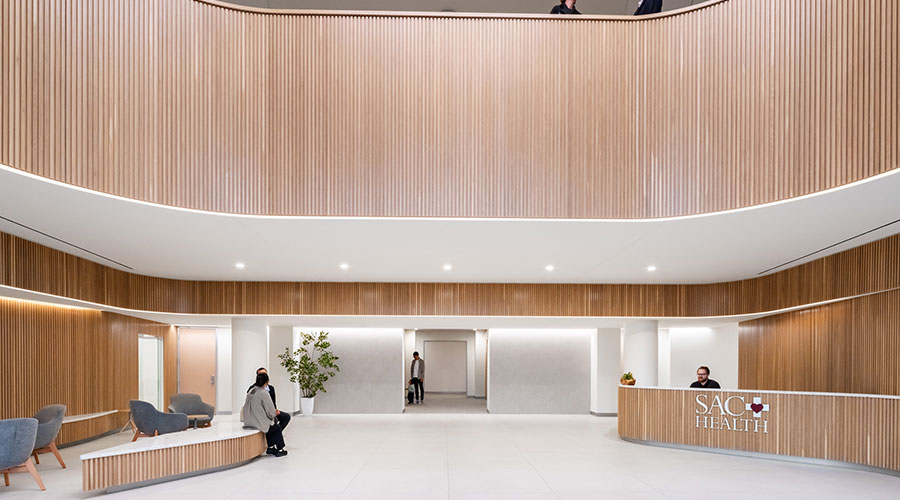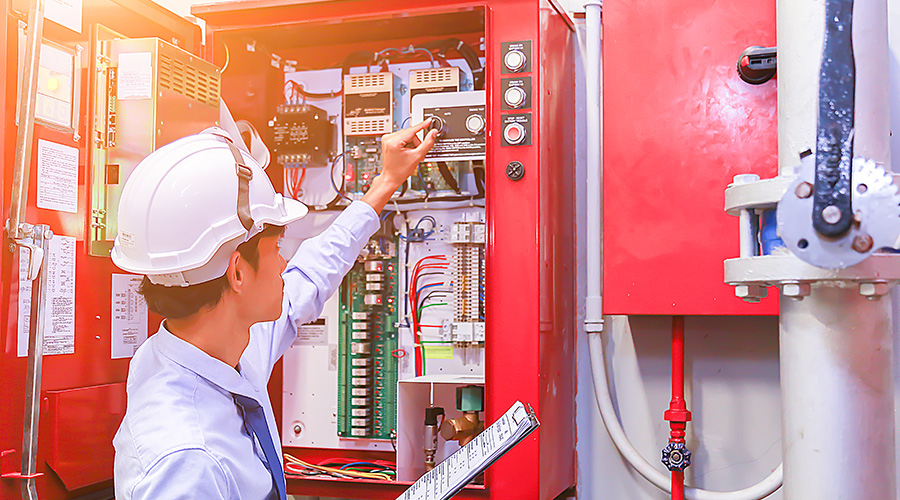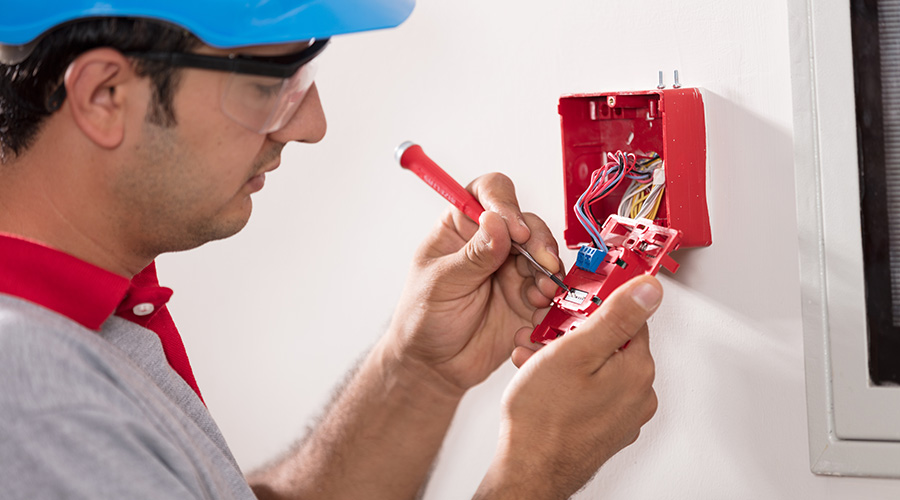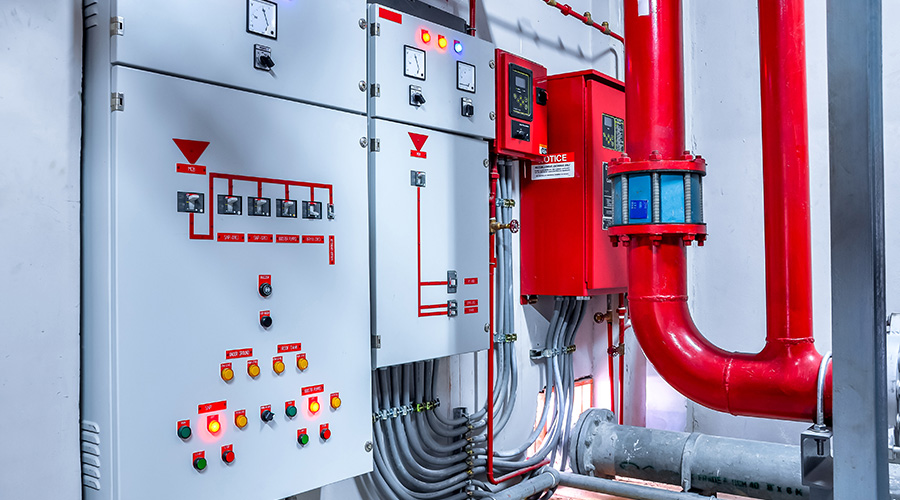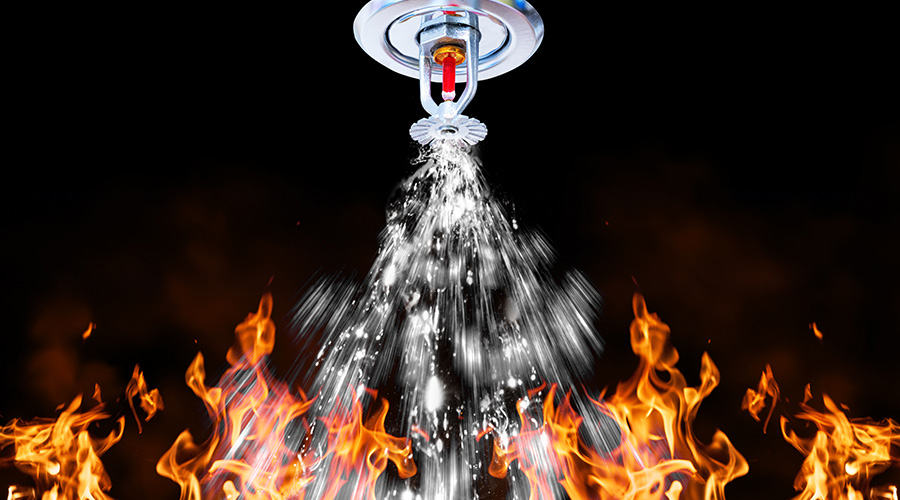Sprinkler Retrofits: Life-Cycle Issues
Heightened scrutiny of measures to detect and prevent fires prompts managers to revisit the costs and benefits of system renovation
Recent fatal fires, including in a Chicago high-rise office building, a Rhode Island nightclub, and a dormitory fire in New Jersey have raised public awareness of fire safety. None of these buildings had sprinkler systems. Increased awareness usually results in increased or more restrictive legislation. Such action eventually will mandate the installation of sprinkler systems in new and existing structures alike.
Responding to public pressure, more local governments are setting deadlines by which older buildings must be retrofitted with sprinklers. Some states are proposing legislation to require automatic sprinkler systems in specific-use occupancies within five years. Current codes for commercial and institutional buildings generally require systems for new construction. But for existing structures, sprinkler systems are required only when buildings undergo a major renovation.
A Matter of Cost
A common myth is that installing a code-compliant fire-protection system reduces building insurance premiums by an amount large enough to recover the initial investment. This is not necessarily the case. Insurance premiums vary from year to year and from market to market. Underwriters are not predictable or consistent in the discounts they offer, and the discounts generally are not significant enough to offset even a portion of the overall system cost.
Serious risks exist, however, in not having a sprinklered structure. Insurance from reputable underwriters might not be obtainable at all or, if it is available, it might be subject to high deductibles. More importantly, an owner might face ruinous civil claims if a fire in an unprotected structure results in human injury or fatality. The good news is that more legislation is being championed to provide tax savings in the form of accelerated depreciation to building owners who install fire-protection systems. These savings offer an attractive way to recover the initial investment.
Fire-protection systems are becoming attractive selling points and are sometimes prerequisites to potential tenants. Fire protection, similar to building-security issues, is no longer an afterthought for managers and building owners.
Managers need to understand the implications and costs involved in installing sprinkler systems so that they can plan the work and budget accordingly. While an organization might be able to pass along some of the costs to potential tenants, the first cost of installation is rightly a concern.
Renovation Coordination
A typical retrofit does not exist. To avoid unpleasant surprises, coordination between building owners, managers, and maintenance and engineering managers is critical. A new system typically is installed while the building is occupied and under normal operation.
It is imperative that managers understand the amount of effort and investment required to install a fire-protection system so the work can be coordinated properly. Building occupants need to be informed of the amount of work required, since it will likely impact their operation as well.
It makes sense to employ an architectural or engineering firm to study the overall impact, feasibility and cost of installing a sprinkler system before awarding the job. The engineering study will enable managers to avoid potential code violations and cost overruns associated with a shortsighted installation approach.
Managers should think about the work and its effect on the building and occupants to achieve desired results. The later in the process problems arise and corrections are made, the higher the cost will be. Architectural and engineering services are imperative when space planning and project phasing become factors. Depending on the structure’s age, the facility might have to comply with code requirements more stringent than those in place at construction. Unless the structure is relatively small and built of non-combustible materials, expect to provide an automatic sprinkler system as a minimum.
A standpipe system might be required if the structure exceeds certain height or area limitations. In such cases, managers can expect to see the installation of a fire pump to boost system pressures to code-mandated levels. The major items that might influence the final cost of installing a fire-protection system in a retrofit situation include the water service, the automatic sprinkler system, and the standpipe system and fire-pump, where needed.
Water Service
Existing water service might have the most significant impact on system implementation. Managers need to determine if the existing service has sufficient size, capacity and pressure to support a system. If any of these parameters is inadequate, new service might be required, which could entail routing a new water main into the structure.
The installation of new water service might incur utility tap-in fees, site excavation and restoration, and provisions for back-flow protection, as well as the cost of the piping itself. Where structures are not close to a sufficiently sized water supply, the monetary impact of providing a new service can be substantial.
In this case, it might be appropriate to consider using water-storage tanks, which can be troublesome to position on developed sites. For example, in a building with an ordinary hazard classification, the water required to properly protect the structure might amount to roughly 43,000 gallons.
Where water storage tanks are considered, pumps will be required to ensure that adequate capacity and pressure is available upon demand. The scope of work associated with implementing new water service might have consequences that extend far beyond the actual confines of the structure.
Standpipe Systems
Costs are roughly $5,000 per floor per standpipe required. Pipe routing might be an issue because the piping generally will be 4 inches or larger in diameter. The installation of a standpipe system usually will trigger the need for a fire pump to ensure that code-mandated pressures are maintained at the top-most hose connection. Where a fire pump is needed, the cost generally will exceed $40,000 to cover pumps and associated controllers.
Among the issues regarding fire-pump implementation is space limits. Housing a fire pump in the structure requires ample space. If space is available on the building grounds, it might make sense to consider a remote, standalone structure for use as a dedicated pump room. Also, a fire pump will require test connections and related piping.
Among the considerations related to electric pumps are electrical service capacity and a means of powering the pump on an emergency basis. This second consideration might require connection to or the inclusion of a generator.
The addition of this piece of equipment has numerous consequences including:
-
Space limits similar to those for a remote pump house.
-
Structural loading. Reinforcement of the structure might be required unless the generator is positioned at grade or n a stable foundation.
-
Ventilation. The generator will require adequate ventilation and exhaust.
-
Noise and vibration transmission.
Considerations for diesel pumps include:
-
Diesel fuel storage. Unless the fuel storage tank is located at or near grade, a filling station generally will be required, complete with truck accessibility.
-
Ventilation and exhaust air requirements. If the pump is positioned within the structure, issues regarding the delivery of combustion air into the space, as well as exhausting air from the engine, can be cumbersome.
As with any system, periodic maintenance is required to make sure the system operates as intended and to keep the system code compliant. This requirement is especially true of systems incorporating larger pieces of equipment.
Finally, managers must remember the costs. Consulting services consisting of feasibility studies, if required; budgetary cost estimates; plan submittals for local permitting; construction document design; phasing documents; and the follow-up construction administration will not be performed free.
Sprinklering an existing building might seem overwhelming, but most facilities will not incur all the costs described. Retrofit installations are cumbersome, so it is imperative that managers think about the impact it will have on a building and plan accordingly.
With an understanding of the requirements, the potential cost, and the ramifications of the installation, maintenance and engineering managers can plan for the work now, rather than when it is mandated by a deadline.
Practical Matters: Cost and Operations
The cost of installing an automatic sprinkler system can range from $1.50 per square foot of protected area to as much as $5.75 per square foot, depending on the complexity of the installation. For common retrofits, the cost should be about $2.35 per square foot. Larger structures tend to benefit from economies of scale, while smaller structures generally entail higher per-square-foot costs.
The existing water service and the building’s architecture might influence system cost. Questions to ask include these:
- Can the existing building structure support the physical weight of the system? This issue needs to be addressed early in the study.
- Is the structure built with non-combustible materials? If not, sprinklers might be required above and below ceiling construction.
- Is the existing structure capable of accommodating efficient pipe routing?
- What existing finishes will be disturbed?
- Will all piping have to be concealed? If so, if there enough space above existing ceilings to accommodate this?
- Is there an aesthetic level of quality that needs to be maintained? For example, will ceilings need to be dropped in certain areas, or will the installation of bulkheads be permitted?
Managers also should consider the impact of sprinkler system installation on building operation. For example:
- Will the work have to be performed during non-standard work hours to avoid disrupting normal activity in the building? If so, it might involve higher costs for premium time afforded to the contractor for installation.
- Will occupants need to be relocated to permit the installation in specific areas? In this scenario, installation will have to be phased to ensure that the building remains functional during the construction phase.
A related issue is the selection of system components because equipment specification and piping material selection will have a monetary impact:
- Will less labor-intensive installation methods be permitted?
- In conjunction with the architectural finishes of the building, will concealed sprinklers be preferred over the use of standard pendent or sidewall types?
Managers also must investigate whether the sprinkler system will require an upgrade of the existing fire alarm system.
|
Douglas G. Ellsworth is an associate with Burt Hill Kosar Rittelmann Associates.
Related Topics:







